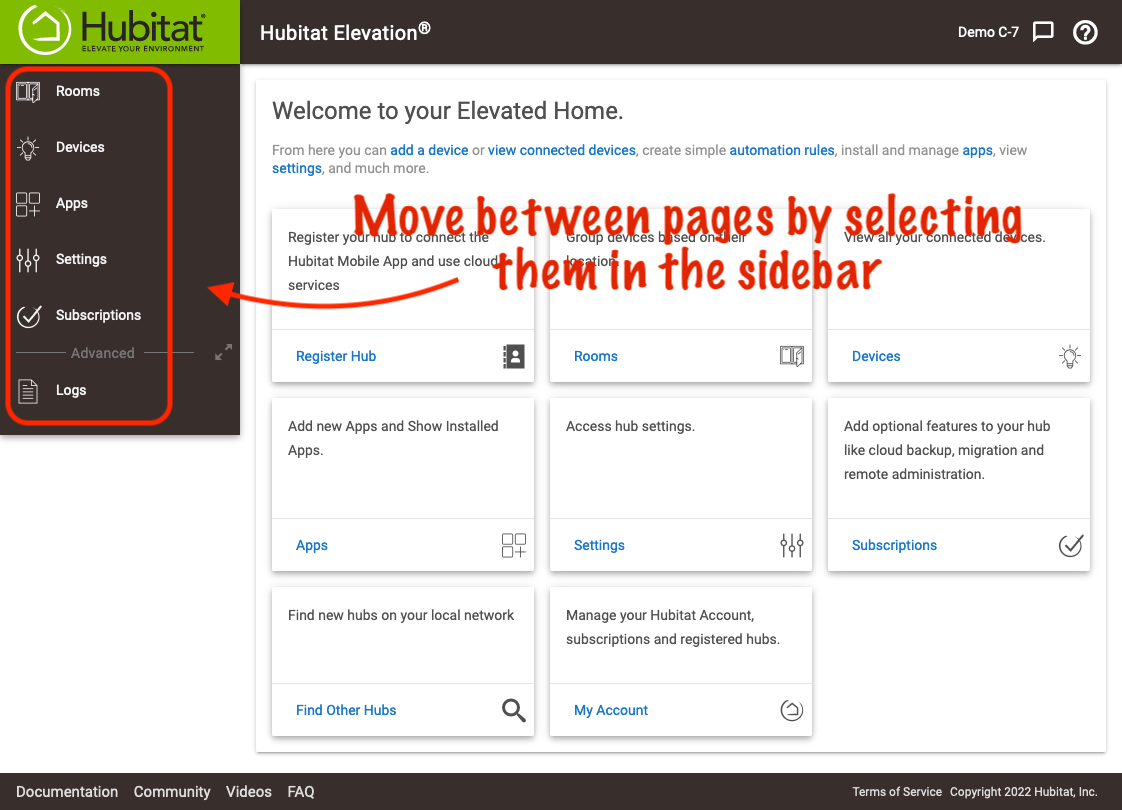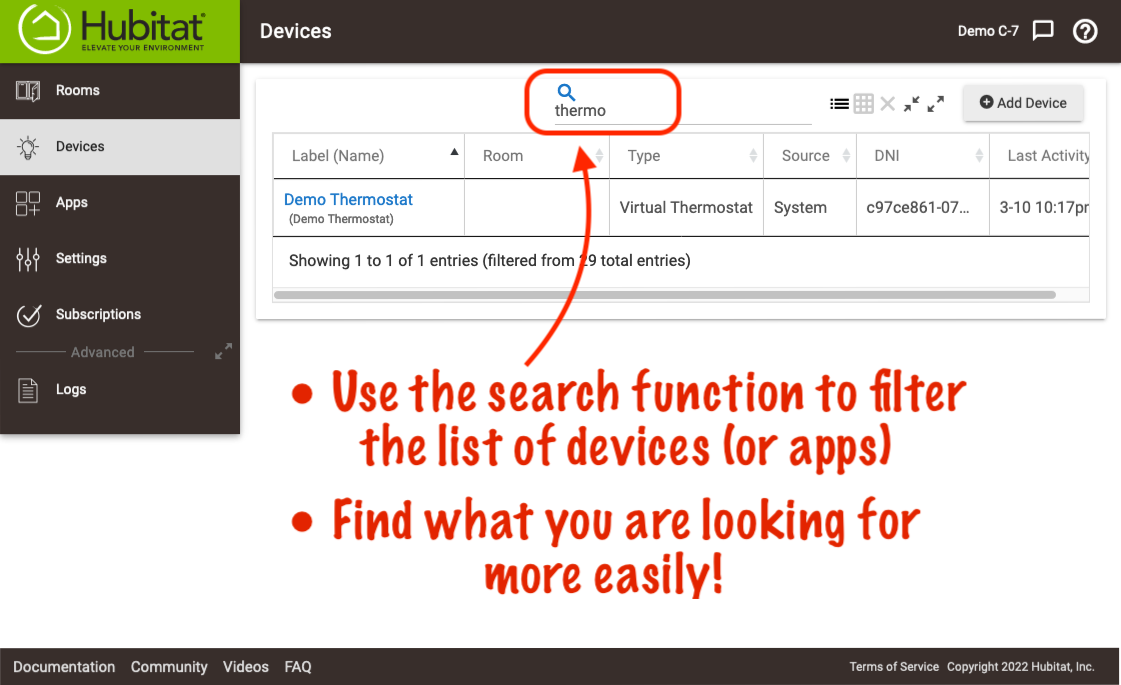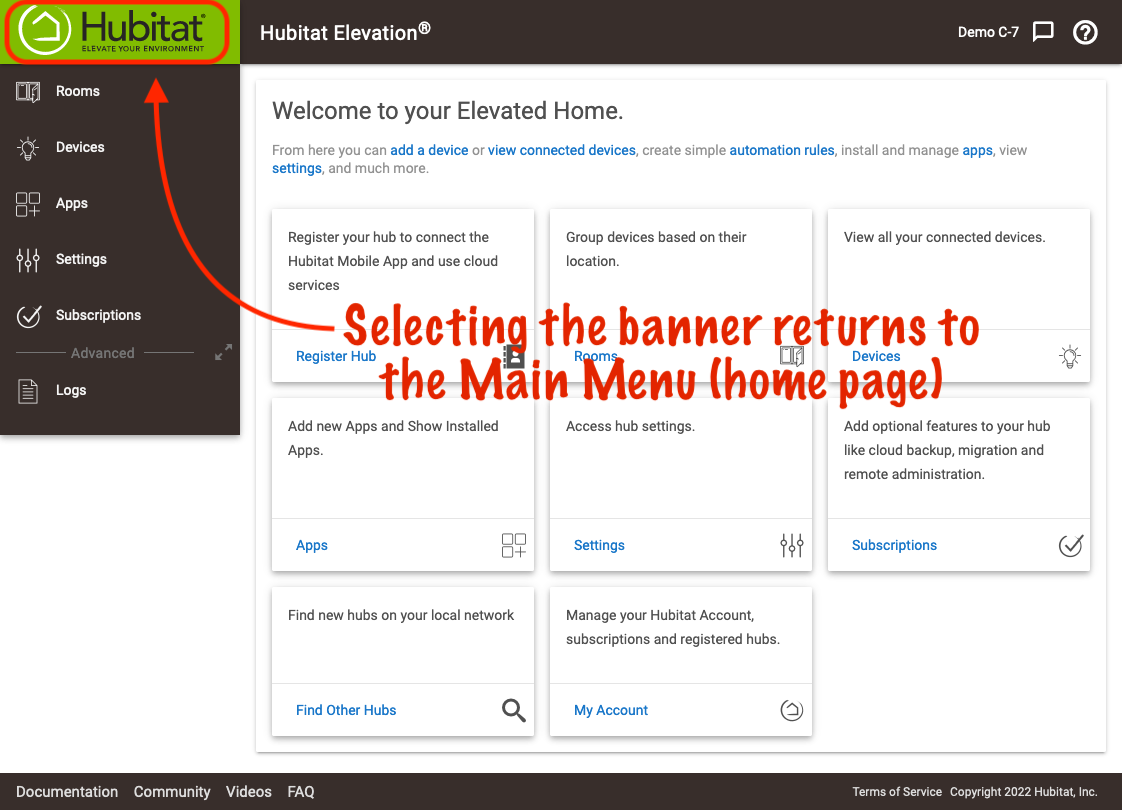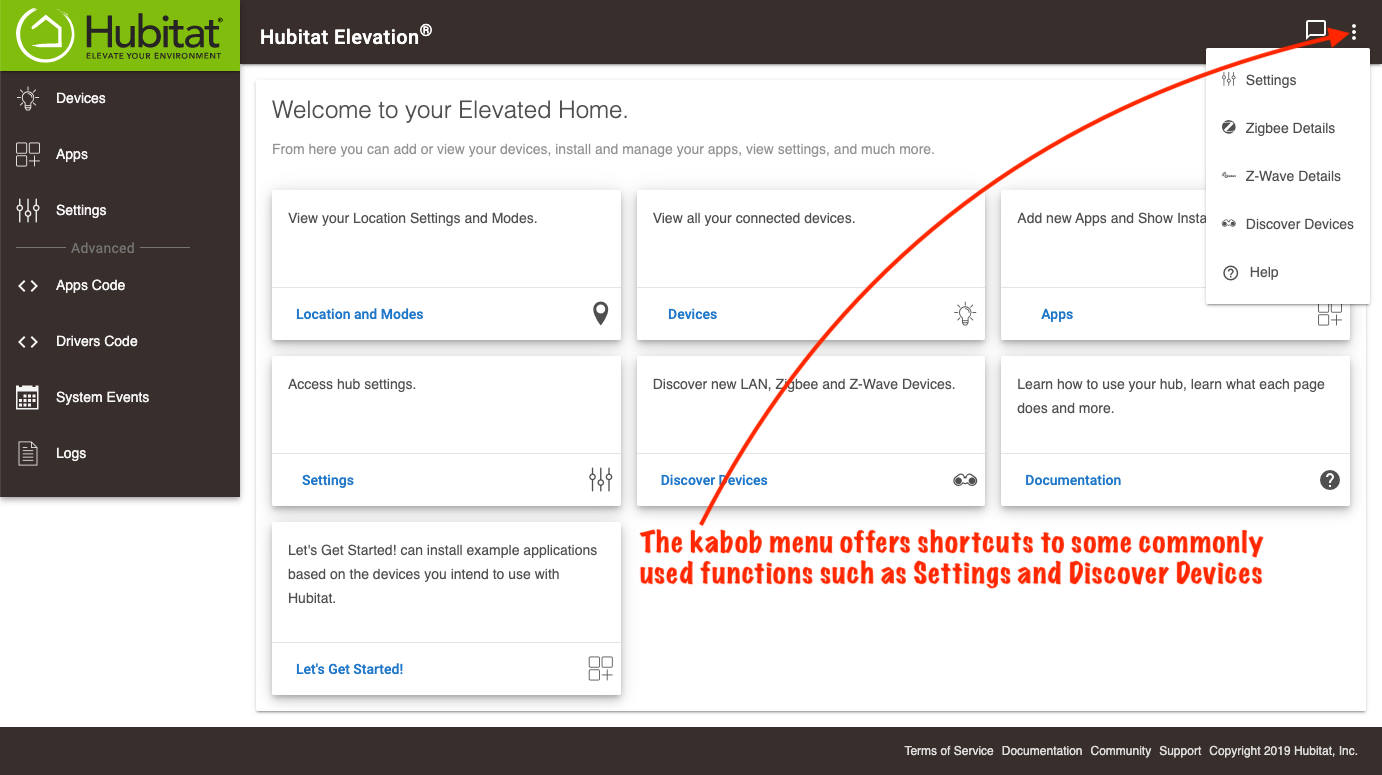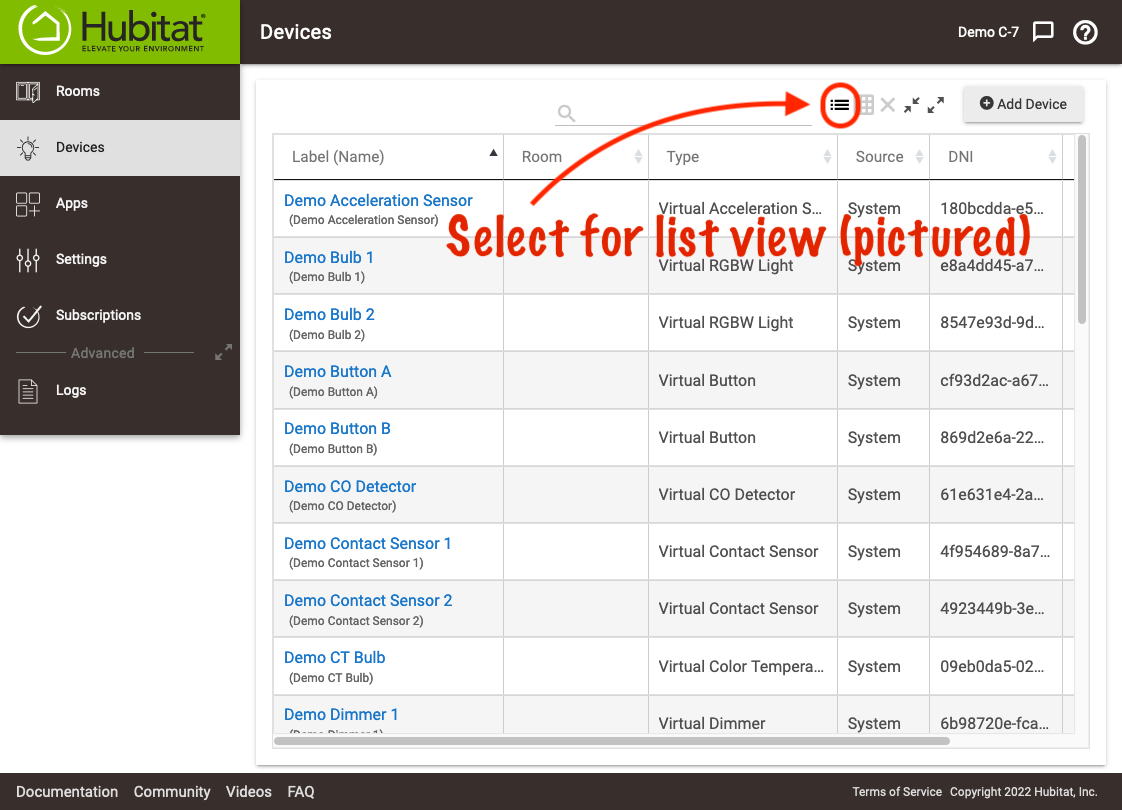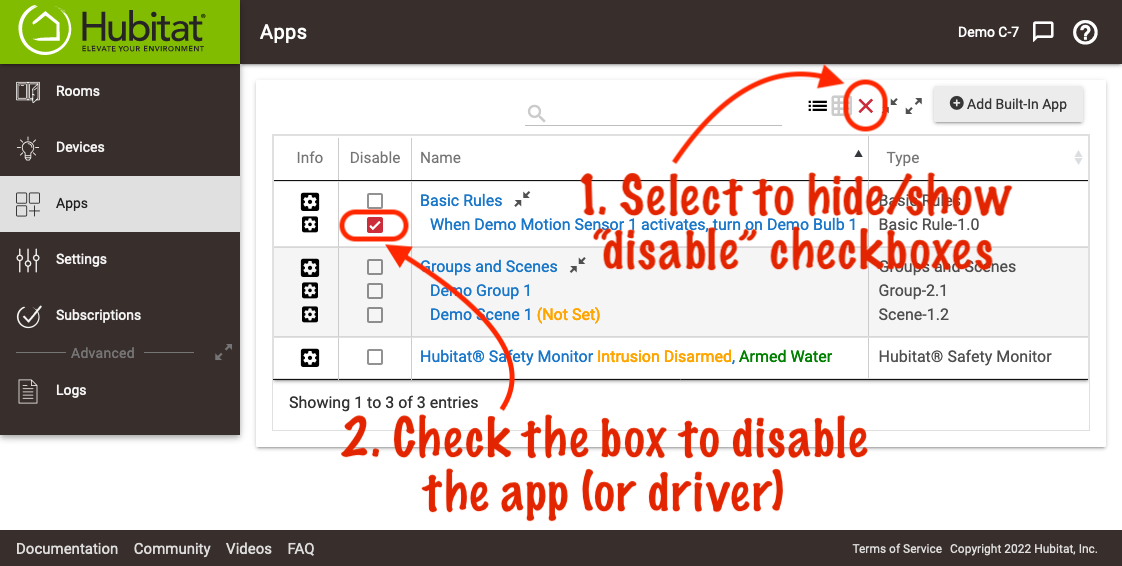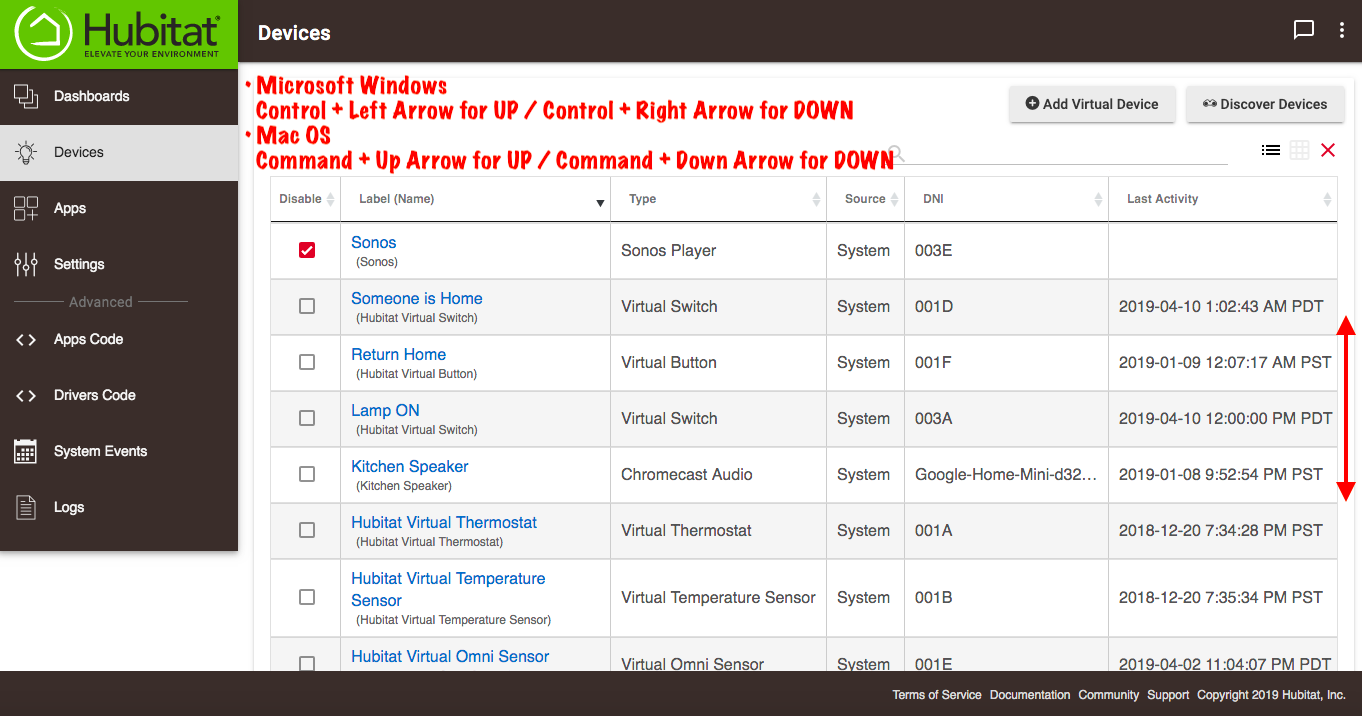Navigating the hub interface
kWe believe that true home automation means your home just responds to you, without your needing to do anything other than just being there. Home automation doesn't mean giving up on manual control when you want it, but in not needing to control everything, it's easy to find yourself becoming quite comfortable with the experience. When something isn't automated, they start to feel primitive and out of date.
Elevating your smart home with Hubitat Elevation® means you can do so much more than just control devices from a smart phone or tablet. That's why we built Hubitat Elevation to be both accessible and configurable from a web browser on your phone, tablet or computer, giving you the freedom to choose the most convenient method.
When you're just getting started, setting up your home automations can be challenging if you only have a small screen to work from, so one of the easiest ways to get setup in no time is to work from a laptop or desktop computer. To help you navigate the hub user interface even faster, here are some shortcuts to make your experience even better. Some navigation is universal to the hub user interface, and some short cuts will vary based on the operating system you are using.
There is great time saving functionality built right into the hub. Here are a few that will help you quickly get around.
- Pressing on the icons in the side bar will quickly move you between pages of the hub.
- Use the built-in search function.
- Press the Hubitat Elevation logo.
- Use the kabob menu.
- Change the view type and sorting order.
- Disable devices and apps you suspect are causing issues.
- As you add devices, the list can grow quickly. The simplest way is to use the search function built into Hubitat Elevation®, but if you're already further down a long device list, getting back to the search bar can take some time.
- To quickly return to the top of the list use the key combination Command + Up Arrow on MacOS. On a Windows computer, use Control + Left Arrow.
- To quickly navigate the the bottom of a list, use Command + Down Arrow in MacOS. With a Windows computer, use Control + Right Arrow.
- Another way to quickly move to devices is to type the first letter of the device name.
- Example: To quickly jump to a device you named Yale lock, just tap the Y key.
- Since Hubitat Elevation is web based, using your web browser's forward and back arrows can be a fast way to navigate.
- With MacOS, the keys are Command + Right Arrow to navigate forward, and Command + Left Arrow to navigate backward.
- In Windows, use Control + Right Arrow to navigate forward, and Control + Left Arrow to navigate backward.
- NOTE: Make sure you're not navigating back to a page that displays the information prior to a change you just made. While this won't undo your change, it can get confusing to use the browser forward and back arrows in those situations.
- Most changes within the hub user interface will update dynamically, while other changes may require you to press somewhere in the background or press an update button. However, if you're using the previously described method to move forward and backward in the browser, it's a good idea to refresh the page in order to ensure you have the most up-to-date information in front of you.
- Use Control + R in Windows, and Command + R on MacOS.
- Having multiple tabs open is convenient when you're troubleshooting. For example, you might have a problem device's details open in one tab and logs open in the other tab.
- To quickly cycle between tabs in Windows, use Control + TAB keys to switch to the next tab on the right of your current tab, and Control + Shift + TAB to move to the tab on left of your current tab.
- With MacOS, use Control + Up Arrow to move to the tab on the right of your current tab, and Control + Down Arrow to move to the tab on the left of your current tab.
